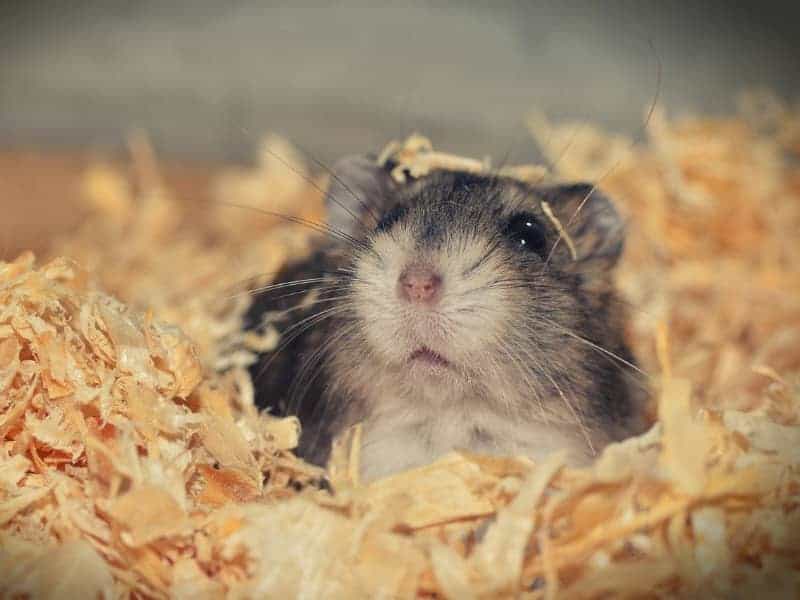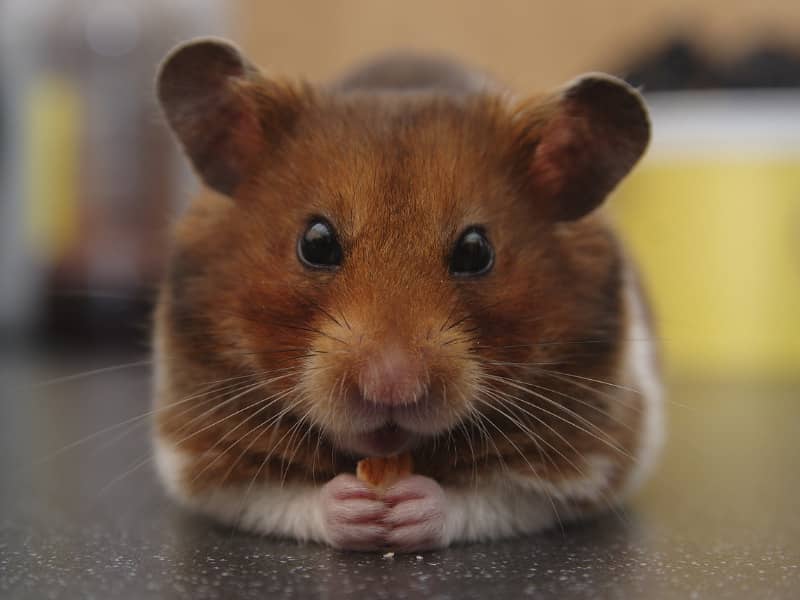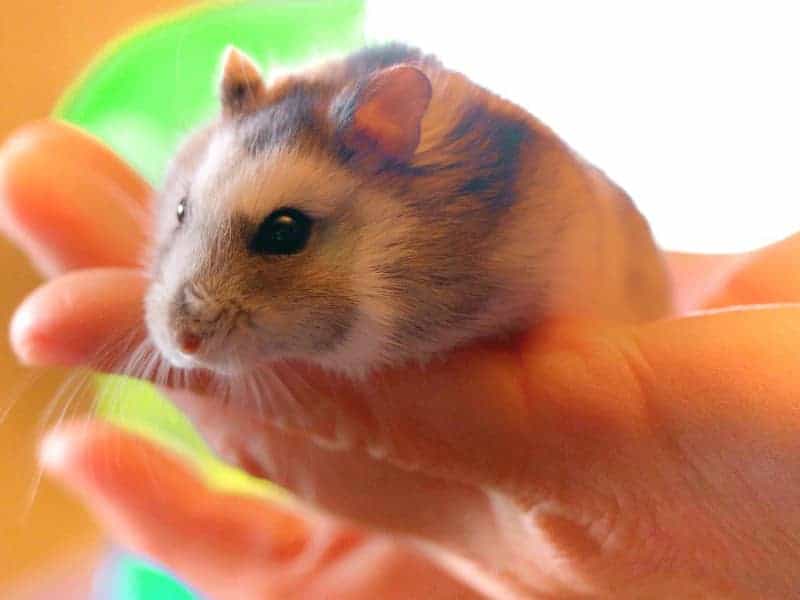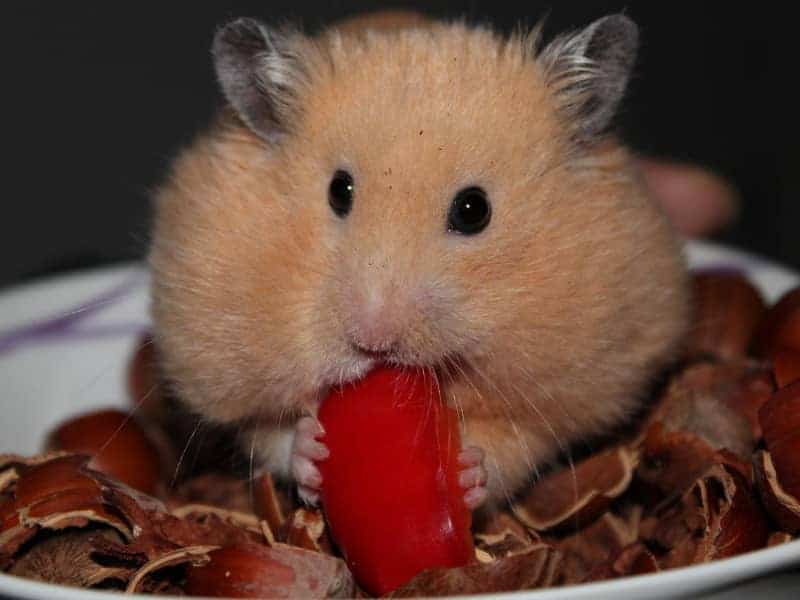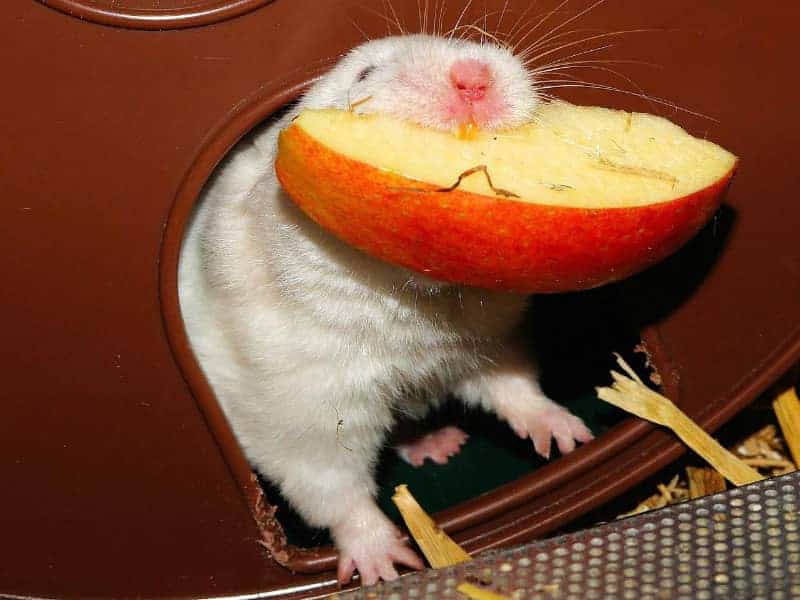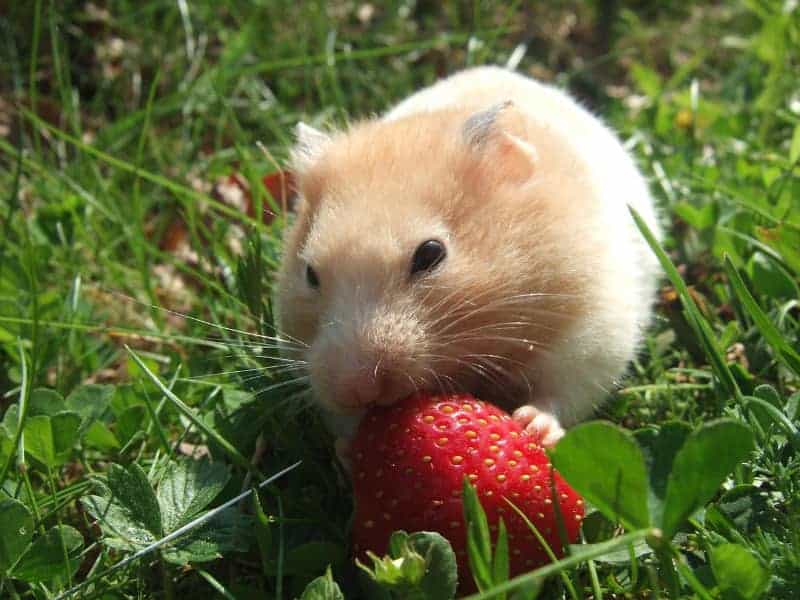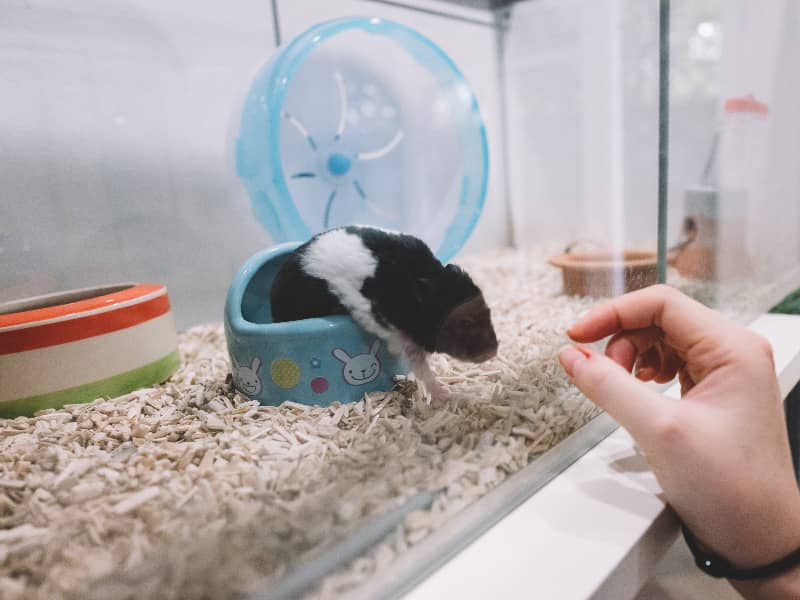
Panda hamster
Before you decide to keep a Panda Hamster as a pet, it is important to know what makes this particular species of hamster special. Panda hamsters are popular not only because of their cute appearance, but also because of their unique character traits. In the following sections, you'll learn more about their origins, characteristic traits, and differences from other hamster species.
- Panda hamster
- Panda hamster - origin and history
- The correct attitude of a panda hamster
- Health and well-being
- Breeding and reproduction
- Conclusion: Panda Hamster
- FAQ about Panda Hamster
- How big does a Panda Hamster grow?
- How long does a Panda Hamster live?
- What do Panda Hamsters eat?
- Can I keep my Panda Hamster with other hamsters?
- How often does the cage need to be cleaned?
- Are Panda Hamsters active during the day or at night?
- How do I tame my Panda Hamster?
- What is the difference between a panda hamster and a Syrian golden hamster?
- How often should I feed my Panda Hamster?
- Can I keep my Panda Hamster outdoors?
- Are Panda Hamsters suitable for children?
- How do I make the cage interesting for my Panda Hamster?
- What to do if my Panda Hamster is sick?
- Can I leave my Panda Hamster alone during my vacation?
- What is the best way to interact with my Panda Hamster?
Panda hamster - origin and history
Panda hamsters are a variant of the well-known Syrian golden hamster. They originated in the Middle East, more specifically Syria and Turkey. Panda hamsters got their name because of their distinctive black and white fur pattern, which is reminiscent of the great bamboo-eater, the panda.
In the 1930s, the first Syrian hamsters, from which the Panda hamster is descended, were introduced to the Western world. Since then, they have become one of the most popular pets. Breeders have created different variants through selective mating, and the Panda Hamster is one of the most fascinating of them.
Characteristic features
The Panda Hamster is mainly known for its black and white fur. This coloring makes him one of the most striking hamster species. His eyes are mostly black or dark brown, which gives him a particularly curious appearance.
Panda hamsters are usually about 10 to 18 cm tall and weigh between 100 and 200 grams. They have a sturdy build and short legs that are ideal for digging. Their cheek pouches are large and can hold an amazing amount of food.
Differences from other hamster species
While the Panda Hamster is outwardly noticed primarily by its black and white coloring, there are also behavioral differences from other hamster species. Compared to the Dwarf Hamster, the Panda Hamster is usually more active and curious.
He is less inclined to bite and is often easier to tame. This makes it a good choice for beginners or families with children. However, it should be noted that Panda Hamsters, like all Syrian Hamsters, are solitary animals and should not be kept in the same cage with other hamsters.
The correct attitude of a panda hamster
A Panda Hamster can be a wonderful pet, but it is essential to create the right conditions for keeping it. In this section you will learn everything important about choosing the right cage, diet and social behavior of your Panda Hamster.
Choice of the appropriate cage
Choosing the right cage is critical to your Panda Hamster's well-being. A cage that is too small can cause stress and behavior problems. The cage should be at least 100 x 50 cm, and bigger is always better.
It should be equipped with different floors, tubes and hiding places. Make sure the bars are not too far apart so your Panda Hamster can't escape. An exercise wheel is also important, but make sure it is large and sturdy enough.
Nutrition and feeding
Panda hamsters are omnivores, which makes feeding comparatively easy. A mixture of special hamster food from the pet store is a good basis.
Likewise, they are happy with fresh vegetables and fruits, but also proteins in the form of boiled egg or insects. Make sure that the food has no sharp edges and is easily digestible. Sugary or fatty foods should be avoided.
Social behavior and socialization
Panda hamsters are usually solitary animals and should not be kept in the same cage with other hamsters. However, there are ways to get them used to the presence of people.
A gentle approach and regular but brief interactions can work wonders here. Panda hamsters are usually curious and active, which makes socialization easier. But be careful: fast movements and loud noises can frighten them, so a calm and patient approach is important.
Health and well-being
Your Panda Hamster's health should always come first. In this section, you'll learn about common diseases, veterinary care, and ways to keep your hamster busy and active that will help keep him healthy.
Common diseases and their symptoms
Like all pets, Panda Hamsters can get sick. Some common illnesses include colds, diarrhea, and skin problems. With a cold, sneezing, apathy and a runny nose can occur.
Diarrhea is often a sign of poor nutrition or stress and should be treated immediately. Skin problems such as hair loss or redness can indicate parasites or allergies. If you notice such symptoms, you should definitely consult a veterinarian.
Veterinary care
It is advisable to have your Panda Hamster examined by a veterinarian on a regular basis. An annual check-up can help detect any health problems early on.
Vaccinations are usually not necessary for hamsters, but the vet can give you more tips on preventing diseases. If you need to administer medication, always follow the vet's instructions exactly.
Opportunities for employment and exercise
For the health and well-being of your Panda Hamster, sufficient exercise is essential. A running wheel in the cage is a must, but also outside the cage the hamster should have the opportunity to let off steam.
Special hamster balls can be a good option, but make sure the hamster doesn't stay in them too long. Intelligence toys and climbing frames can also help keep the hamster occupied and satisfy its curiosity.
Breeding and reproduction
If you are thinking about breeding Panda Hamsters, there are some important aspects you should consider. In this section you will learn more about mating, pregnancy and raising the young.
Mating and pregnancy
Breeding of Panda hamsters should be carefully planned and carried out only by experienced keepers. Mating is best done when the animals are young and healthy. A female is ready to mate from about the age of four months, while the male becomes sexually mature a little earlier.
After successful mating, the pregnancy of the female lasts about 16 to 18 days. During this time she should be particularly well fed and disturbed as little as possible. Make sure that the nest is well equipped so that the female has a safe place to give birth. Immediately after mating, the hamsters should be separated again.
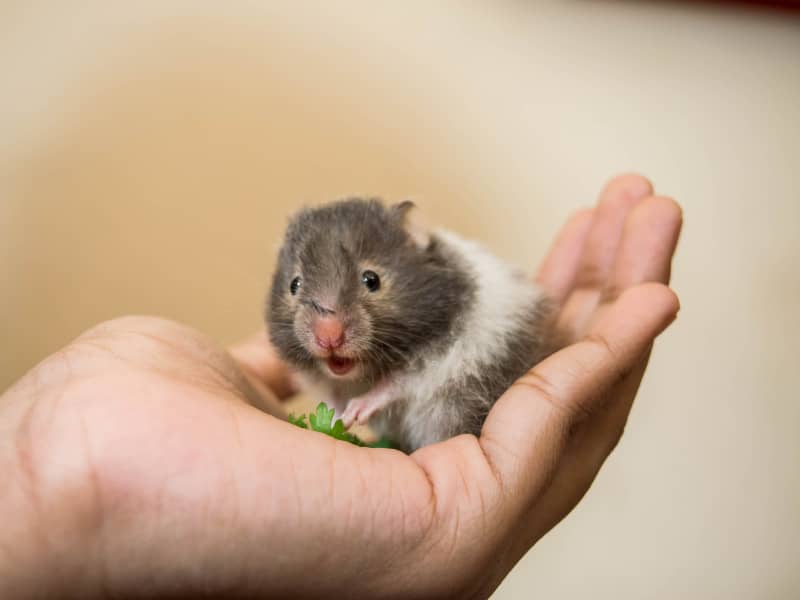
Raising the young
After birth, it is important not to disturb the female and the young in the first days. The mother provides the young with milk and takes care of their cleanliness.
From the third week, the kittens can begin to eat solid food. Then is also the time to carefully accustom them to human touch. The sexes should be separated from the fifth week to prevent unwanted reproduction.
Responsible breeding practices
Breeding panda hamsters should always be done responsibly. This means planning in advance and making sure that all animals are healthy.
Avoid inbreeding and make sure the animals have a good genetic pool. Also learn about the special needs of pregnant and young Panda hamsters and make sure you have the time and resources to accommodate them.
Conclusion: Panda Hamster
The Panda Hamster is a fascinating and unique species of hamster that impresses not only with its striking black and white fur, but also with its curious and friendly nature. Although it belongs to the Syrian hamsters, the Panda Hamster brings its own unique needs and peculiarities.
From choosing the right cage to diet to health care and breeding, there are many aspects that should be considered when keeping a Panda Hamster. With the right care and attention, your Panda Hamster can live a happy and healthy life.
Hopefully, this blog post has given you a comprehensive overview of the world of Panda Hamsters and provided you with valuable tips for everyday life with your fluffy friend.
FAQ about Panda Hamster
How big does a Panda Hamster grow?
An adult Panda Hamster usually grows between 10 and 18 inches tall and weighs between 100 and 200 grams.
How long does a Panda Hamster live?
The average life expectancy of a Panda Hamster is between 2 and 3 years, depending on living conditions and health care.
What do Panda Hamsters eat?
Panda hamsters are omnivores. Their diet should include a mixture of special hamster food, fresh fruits and vegetables, and occasional proteins such as boiled egg or insects.
Can I keep my Panda Hamster with other hamsters?
No, Panda Hamsters are solitary animals and should not be kept in the same cage with other hamsters.
How often does the cage need to be cleaned?
It is recommended to clean the cage thoroughly at least once a week. Daily removal of soiled litter and food remains is also important.
Are Panda Hamsters active during the day or at night?
Panda hamsters are usually nocturnal. However, it is not uncommon for them to be active for short periods during the day as well.
How do I tame my Panda Hamster?
Patience and regular, calm interactions are key to taming a panda hamster. Avoid quick movements and loud noises so as not to frighten the animal.
What is the difference between a panda hamster and a Syrian golden hamster?
Although Panda Hamsters are a variant of the Syrian Golden Hamster, they are distinguished mainly by their striking black and white fur.
How often should I feed my Panda Hamster?
Daily feeding with a balanced mix of dry food and fresh food is ideal. Make sure that fresh water is always available.
Can I keep my Panda Hamster outdoors?
No, Panda Hamsters are designed to be kept indoors and should not be kept outdoors as they are sensitive to temperature changes and humidity.
Are Panda Hamsters suitable for children?
Panda hamsters are generally friendly and less likely to bite, making them a good choice for families with children. However, it is important to monitor the interaction between children and the hamster.
How do I make the cage interesting for my Panda Hamster?
Use different levels, tubes and hiding places to add variety to the cage. Intelligence toys and climbing frames can also be helpful.
What to do if my Panda Hamster is sick?
If you notice symptoms such as diarrhea, apathy, or skin problems, you should see a veterinarian immediately.
Can I leave my Panda Hamster alone during my vacation?
For short absences of up to a few days this is possible as long as there is enough food and water. For longer vacations you should organize a caregiver.
What is the best way to interact with my Panda Hamster?
The best time for interaction is late afternoon or evening when the hamster is awake. Avoid disturbing him during his sleeping phases.
Author

-
Garden animal - A life with nature
Welcome to my animal blog! My name is Dirk and I am happy to take you on my journey through the fascinating world of animals and gardening.
Born 54 years ago, I have had an insatiable curiosity for the animal world around me since childhood. Although I have moved professionally in other industries, my true passion has always been animals and nature. It is remarkable how a small garden has become such an important part of my life.
Many of my fondest memories are associated with the animals that share our home. Whether it's the curious squirrels that scurry across the trees in the morning, the colorful variety of birds that visit our feeders, or the busy bees and butterflies that pollinate our flowers, every moment with them is invaluable to me.
This blog is my contribution to share my experiences, discoveries and insights with like-minded people. Here I will share stories of unforgettable encounters with animals, give tips on gardening and creating wildlife-friendly habitats, and take you on my journeys through nature.
Thank you so much for being here!
Cordial,
Dirk aka garden animal
Last posts
- 27. February 2024PetsVeganes Hundefutter – Grün und Gesund?
- 18. January 2024ChickensOregano für Hühner
- November 27, 2023HamsterDiurnal hamsters
- November 24, 2023HamsterHamster hammock

